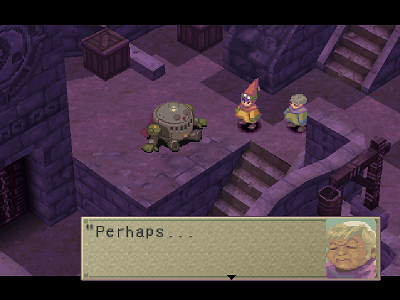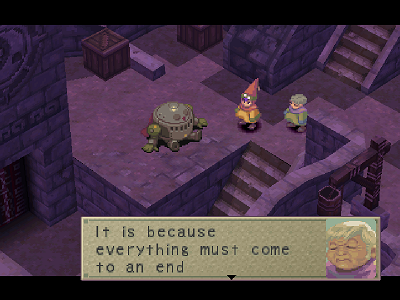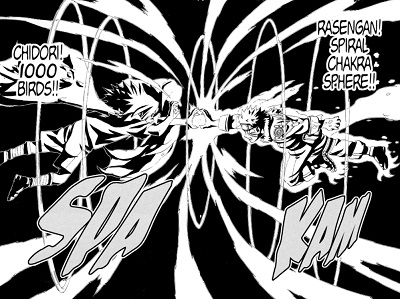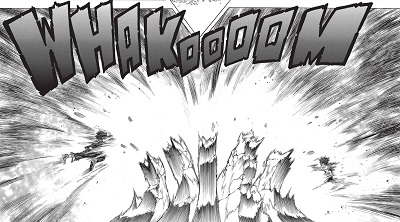by Koyoharu Gotouge
Writing reviews never becomes easy.
I finished this manga yesterday. It’s a bit difficult to say if it was “good” or “bad” since there were some things that weren’t very good but most of it wasn’t bad. Which might have something to do with the extremely low standard in shonen action, to be honest. (Though, shonen isn’t a genre. It’s a target demographic but we’ll go with ‘shonen action’ for convenience’s sake.)
The story starts in a small rural village in the mountains. The main character, Tanjiro Kamado, descends the mountain to sell coal and then spends the night at an old man’s house, as there have been rumours about a demon wandering around at night. Once he gets back to his home in the morning, he finds his family slaughtered and his little sister, Nezuko, turned into a demon. Through certain circumstances, Tanjiro ends up becoming a demon slayer — which is a secret organization that hunts demons — so he can find out how to turn Nezuko back into a human.
So, that was my very bad summary of the beginning of this manga. To make this shamelessly easier for me, I’ll just kind of list the stuff that wasn’t very good and what wasn’t bad — while addressing some of the stupid criticism this manga has received and being sarcastic towards the genre as a whole.
The pacing and many of the scene transitions were weird. I guess it’s understandable since there are only about 200 chapters and they were relatively short, and this appears to be the author’s first work. I didn’t mind this so much because at least the story knew what it wanted to be and never strayed from this.
You know, unlike Boku no Hero Academia that’s one thing while pretending to be another. And as a result meanders and wanders while telling absolutely nothing. Someone actually compared Demon Slayer and Boku no Hero Academia as if the latter was superior which gave me a laugh.
There’s practically no world-building. I could infer that the story is taking place somewhere in late 19th-century or early 20th-century Japan, but for all the lack of geographical pinpoints, it might as well have happened in the Land of Generic Historical Japanese Fantasy AU. Otherwise, the historical aspects were pretty nice.
The characters… well, they were strange and rather one-dimensional but sweet. Though, most of them had such unusual and long names that I can’t remember even half of them, ha ha. Someone complained about the lack of character development but, you know, I was thinking about this the other day, though I forget what prompted this thought.
What is “character development”? Is it starting at one place and ending up in another? Is it having an epiphany or two? Is it a total turnaround on their starting personality?
For example, someone complained that the slaughter of Tanjiro’s family didn’t turn him into a Sasuke-clone or whatever. I mean, I do agree that his family’s death was really nothing more than a plot device to start off the story. But, like, he still has his little sister who is more important to him than his own life and that’s one of the points in this manga.
“It’s not worth while to spend one’s life grieving.”
The point wasn’t to go all Sasuke — obsessively brooding and chasing after the source of his trauma and ruining his life in the process. I mean, if Sasuke had really wanted to take revenge on his traumatogenic brother, he should’ve done the exact opposite of what Itachi wanted him to do, live his best life and kill him with his friends. But then Itachi was actually “redeemed” and he “did it all out of love” — just saying, but that’s what a lot of abusers say.
One of the points in Demon Slayer is to live your best life, for the sake of those who have died.
Another point was that Tanjiro is kind. He’s unhesitatingly, unflinchingly kind even towards demons and this actually gives many of the demons a “second chance” in or after death. But Tanjiro still knows his duty and never flinches away from it. I can’t speak for the author but I think Tanjiro’s character was supposed to bring to mind Buddha or otherwise some holy man — though, he does go berserk several times in the face of irredeemable evil.
One of the things that bothered me was that most of the characters seemed to be, like, ten or something. I get the external reason for this because hello, shonen but I’m not sure if there was an internal reason for the Demon Slayer Corps to use child soldiers. Well, it’s a secret organization that gets most of its recruits when their families have died at the hands of demons. So in a way, it’s a good thing that they have a place where they can go to and a purpose but still, don’t use child soldiers.
On the other hand, thanks to most of the characters being young there was no gratuitous fan service — you know, unlike in Boku no Hero Academia which services fifteen-year-old girls. And don’t get me started on Midnight. Neither was there badly written, uninspired romance even though the end pairings were pretty obvious still.
Someone complained that Demon Slayer is a generic shonen and, well, it is. But the problem isn’t whether it’s generic or ~original~, it’s what it does about itself that’s important. And frankly, if all you’re looking for in stories is novelty, you’re going to be sorely disappointed.
If you include oral stories, there have been at least 60,000 years of human storytelling. There is no novelty so seriously, get over this mindset.
The demons reminded me of yoma from Claymore, with a dash of zombies from Resident Evil. The origins of the demons reminded me of Kingdom — or wait.
*checks the dates*
Demon Slayer: 2016-2020.
Kingdom: 2019—.
Okay, so the origins of zombies in Kingdom remind me of the origins of the demons in Demon Slayer, ha ha. Also, I think the zombies in Resident Evil also came from a flower and the first Resident Evil was released in 1996. So, meh.
Also, the epilogue was like half the Attack on Titan doujinshi I’ve read.
But as far as its themes go, it was good. Such as, live the best life you can for the sake of those who have died and life is beautiful because it ends.
“If our life did not fade and vanish like the dews of Adashino’s graves or the drifting smoke from Toribe’s burning grounds, but lingered on for ever, how little the world would move us. It is the ephemeral nature of things that makes them wonderful.”
“If you constantly regret life’s passing, even a thousand long years will seem but the dream of a night.”
“No. I don’t understand you! You have thousands of my days, but I have thousands of moments in which I can be merry and happy. Does all the splendor of this world cease to exist when you die?”




Another theme was that friends and connections are important. Which is basically the theme of half the Japanese stories ever. As such, there wasn’t a single demon that wasn’t killed without team effort. This was honestly refreshingly consistent unlike in other shonen where the main character is always the most overpowered little power fantasy who ends up winning alone. There were also no “chosen ones” — in fact, the characters from “chosen” family lines were secondary characters who ended up dying.
And that’s another thing, these characters would die or lose their eyes and hands. Permanently. Consequences, in shonen. Say it ain’t so.
You know, unlike in Boku no Hero Academia that tells you Izuku will lose the use of his hands if he keeps using his power recklessly. And then never actually has the guts to follow through. Even All Might’s injuries were treated as comic relief instead of as an actual thing, and then people try to tell me there are “consequences” in that thing.
Anyhow~ where was I?
I also liked that the story was about siblings because that’s kind of rare. Though, for the most part Nezuko was reduced to a box or a lineless character in what appeared to be fetish gear. I mean, I did get the purpose of the bamboo gag as a precaution so she wouldn’t eat people but at the same time I was uncomfortably reminded of ball gags. But anyway, I just kind of hoped for more for her character.
Another thing I liked was when the Rengoku dad badmouthed his dead son in front of his other son and Tanjiro actually got mad. He got so mad he headbutted the man and said he’d do it again.
You know, unlike Izuku who, upon hearing Todoroki’s backstory, went “Oh my god, that backstory is worthy of a main character!” — like, make me want to vomit, why won’t you. And people actually ship these two together.
The demons were — kind of interchangeable as far as their demonical dialogue went. What really distinguished them were the moments of humanisation after their deaths. There were basically three types of demons: those who became demons after a trauma, those who were total psychopaths before they became demons, and those who became demons so they wouldn’t die.
The final boss was the last one so he wasn’t all that interesting, to be honest.
I guess that’s all of my thoughts on it?1,2
But it was nice to read a good shonen for a change.
1 I knew I forgot something, ha ha. So the combat gimmick in this story is basically based on the elemental system mixed with swordsmanship and ‘breathing’. There actually is a martial art like this — systema if I recall correctly — and a rudimentary internet search reveals that most martial arts apparently do, in fact, take advantage of controlled breathing.
2 Nope, still not done yet. I can’t believe I forgot the best part of this manga. None of the characters stopped to monologue their powers. It’s been so long since I’ve read a shonen author who doesn’t treat their readers like morons with the attention span of a goldfish. But to be fair, a lot of the technique names were like word salads of cool-sounding words, ha ha.

